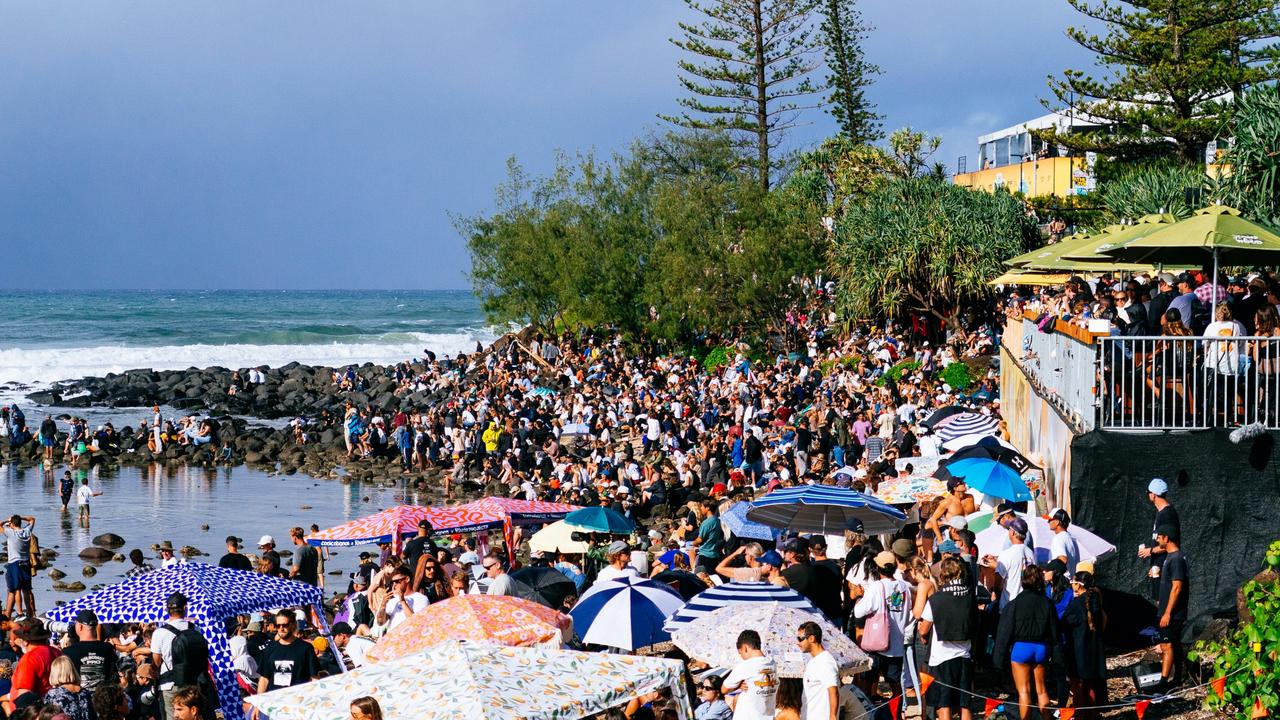Is this surfing’s quirkiest boardriding?
Is this surfing’s quirkiest way to ride a board?
Surfing
Don't miss out on the headlines from Surfing. Followed categories will be added to My News.
ROB Boyton is one of the most passionate bodysurfers on the Gold Coast, according to Travis Davies, organiser of the Slydefest, a handboarders competition to be held on June 1 on Gold Coast’s northern beaches.
The one-day handboarders event has attracted open men, womens and under-15 mixed competition with 15-minute heats and a 20-minute final.
SUBSCRIBE TO THE BULLETIN: JUST $1 A WEEK FOR FIRST 12 WEEKS (min cost $4)
“Handboarding is hugely popular in America and especially Hawaii,” said Davies who is keen to promote the sport where the participants refrain from wetsuits and wear swimwear (budgie smugglers) instead of board shorts.
There are two disciplines; one is bodysurfing without the handboard, the other uses a handboard with a wrist leash.

Both use swim fins but the Gold Coast Slydefest event is a compulsory handboard-only.
Boyton uses a handboard and goes out in all types of conditions. He learnt to surf on a surfboard inspired by four-time world champ Mark Richards in 1977, and relied on local legend Guy Omerod and his big wave knowledge at Burleigh Point.
Boyton made the switch from surfboard to bodysurfer in 1981 after watching a young grom cracking waves at Narrowneck.

“I walking along the beach after a surf at the Neck and saw this kid having a crack on a handplane,” he recalled.
“I got talking to his Dad and found out it was a Taylor’s Mistake Handski (originally from New Zealand).
“I bought one for $75 and splashed around with it for six months and finally bought a pair of swim fins.”
The first thing he noticed was how much more effort is required.
“You think you’re fit but getting out, catching a wave, doing manoeuvres, even just trying to stay in one spot all requires more effort,” he said.
The second thing was the connection to the wave.
“You can feel the set coming and when you take off you feel the face of the wave across your body. On a bigger wave you feel the power pocket; it’s like kicking against a moving wall that bends your back as the wave pushes you forward.”
He described the difference between surfing and handboarding as a sensation of floating and water moving around you. “You don’t get those sensations on a surfboard,” he insisted.
Legendary Gold Coast surfcraftman and Australian champion Richard Harvey has had a hand in helping Boyton design his special model.
“In ‘85 I met Richard and he shaped me a square tail, channel bottom with no fins and then in ‘87 we had a crack at a type of double concave pin tail,” Boyton said.
“My mates called it the cuttlefish. My boards range in size from 11x7 inches to “The Grey Whale” mal, which is 13x7 inches.”
Bodysurfing is called “Whomping” which dates back to the 1960s at Windansea, LaJolla shores, California.


